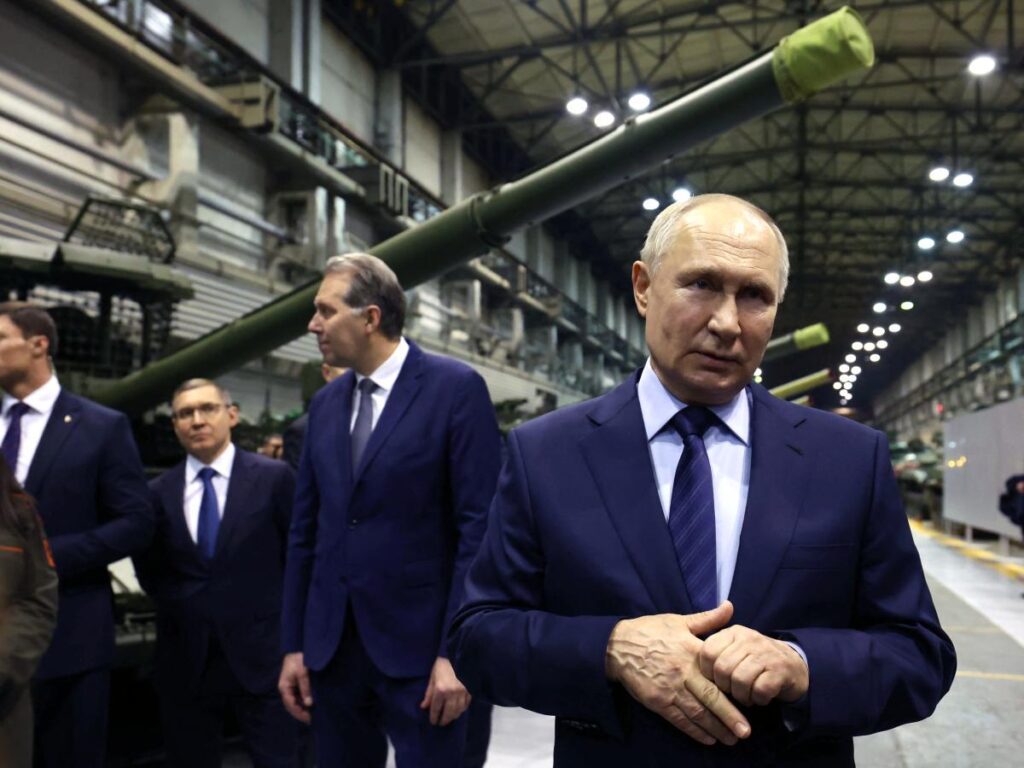Russia’s defense industry is currently facing a severe shortage of skilled labor, exacerbated by long-standing traditional gender norms that restrict women’s participation in key roles within this crucial sector. Recent reports highlight this labor gap as Russia intensifies its military efforts amid the ongoing conflict in Ukraine. With the government channeling a substantial 40% of its overall budget into defense spending, there is an urgent demand for military equipment and the requisite infrastructure to support a planned increase in the number of active soldiers to 1.5 million. Despite Russian President Vladimir Putin’s claims of job creation, statistics suggest a mismatch where numerous job openings in the defense sector remain unfilled, highlighting the growing concern regarding the workforce crisis.
Recent analysis indicates that the demand for skilled workers in the defense manufacturing sector is particularly acute, with approximately 90,000 job postings identified over a single month during the summer. The high demand for operators of computer numerically controlled (CNC) machines, essential for various manufacturing processes, underscores the dire situation. With about 18,600 vacancies in this area alone and a mere 600 applicants, the challenge of attracting qualified labor is stark. This labor shortage is compounded by the manpower being diverted towards the conflict itself, where individuals like migrants, students, and prisoners, who might have filled these roles, are instead being conscripted into military service.
Research from researcher Dara Massicot at the Carnegie Endowment for International Peace emphasizes the extent of manpower losses due to wartime emigration and military mobilization, estimating a shortfall of around 600,000 working-age males. This acute demographic issue is difficult to resolve, highlighting the need for alternative sources of labor, particularly from women, who represent an underutilized potential workforce. Although women have historically engaged in the workforce in various capacities, systematic restrictions remain in place, barring them from numerous vital occupations essential to the defense industry.
The limitations placed on women’s roles in Russian labor, rooted in fears for their reproductive health, are significant; many professions, especially those involving hazardous materials or physical strain, are off-limits. In sharp contrast, countries like the United States see a much higher percentage of women participating in skill-based jobs, exemplified by the mere 5% of female welders in the U.S., who nonetheless represent a substantial pool of talent. Massicot points out that rather than amending labor laws from the Soviet era, Russia has opted to import foreign labor or utilize prisoners instead of actively engaging a competent and ready labor force comprised of women.
Beyond the immediate ramifications of the labor shortage in the defense sector, broader demographic trends indicate that Russia’s workforce is expected to continue its decline, with predictions showing an ongoing shortage of around 5 million workers across all sectors by the end of 2023. This demographic spiral predates both the COVID-19 pandemic and military conscription for the ongoing war, revealing a deeper societal issue within the country. Amid these labor shortages, the Russian government appears to have adopted a strategy focused on reinforcing traditional gender roles as a means of alleviating some demographic pressures.
President Putin’s reflections on the benefits of larger families and recent policy considerations aimed at limiting access to abortion suggest a cultural and political strategy to encourage women to assume more conventional roles related to childbearing rather than entering the workforce, particularly in defense manufacturing. This cultural pivot presents a significant challenge for the industry, as it attempts to navigate the urgent need for skilled labor while reconciling longstanding societal norms and expectations. The current situation encapsulates both the immediate difficulties of workforce shortages and the longer-term demographic challenges Russia faces in the context of its military ambitions and broader economic stability efforts.

